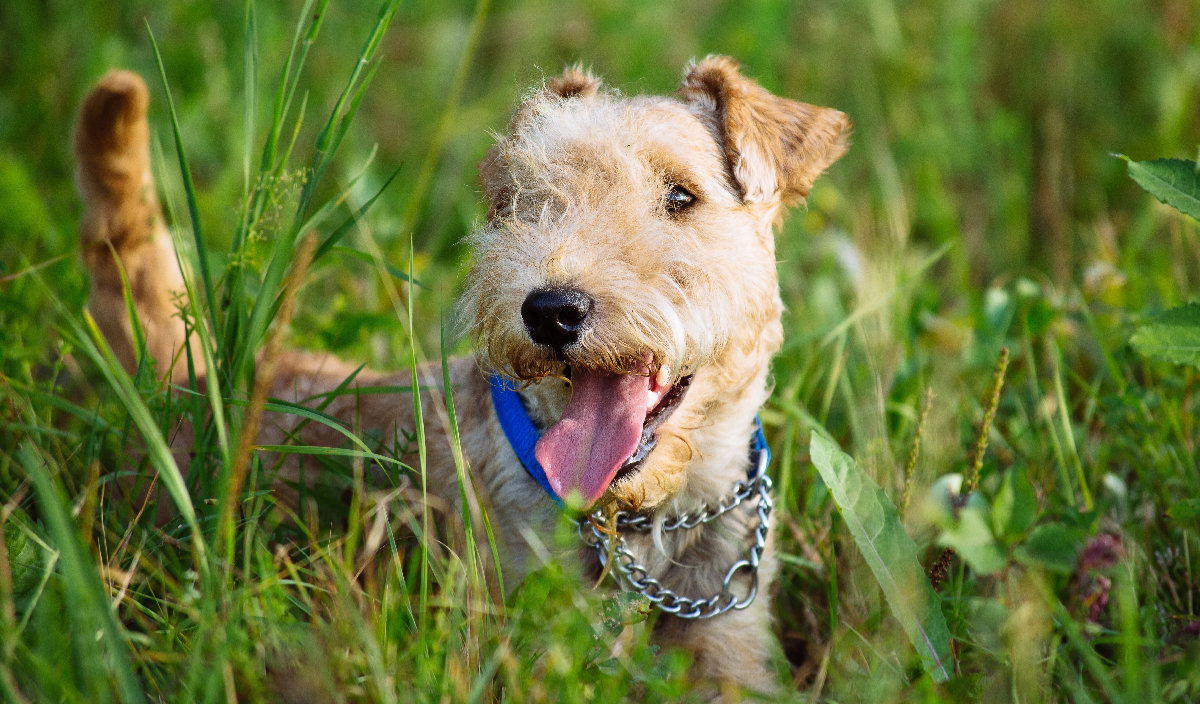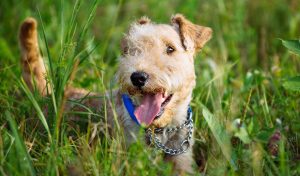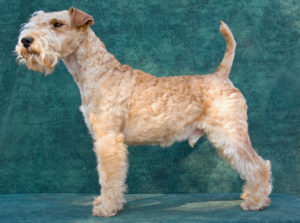
Lakeland Terrrier

Image: ivkatefoto/Shutterstock.com
Quick Overview
| Name | Lakeland Terrier |
|---|---|
| Size | Compact |
| Grooming | Easy |
| Training | Moderate |
| Exercise | At Least Daily |
| Origins | England |
The Lakeland Terrier Working Dog Made Good.
The Lakeland Terrier or "Lakie" as they are more affectionately known originates not surprisingly from the English Lake District where they were employed as practical working dogs. Originally, they would be used to kill foxes and although many are still used for this purpose, you are more likely to encounter one on a lead nowadays. They have been show dogs since around 1921 when the Lakeland Terrier Association was formed, and in 1963 the rather grandly named "Rogerholme Recruit" won the best in show award at Crufts; something which put the breed on the map.

A fine looking Lakeland Terrier posing for the crowd at a dog show.
Image: Linn Currie/shutterstock.com
Lakies tend to be good with children but as with any dog they should never be left with them unsupervised. Also ensure that children follow the basic interaction rules including no ear or tail pulling and never disturbing them while they are sleeping and never try to take a dog's food away. Small pets such as hamsters and gerbils will not be safe, and Lakeland teriers can be aggresive towards strange dogs.
Quick Overview
Name: Lakeland Terrier
Size: 13-15 inches tall fully grown
Weight: 15-17 lbs (7-8 kg)
Grooming: Weekly brushing 20-30 minutes and semi-regular stripping and clipping
Training: Can be a bit challenging especially for a novice dog owner.
Exercise: Yes, please! They are High Energy Dogs who also need a bit of playtime.
Temperament: Bold friendly and possibly a little arrogannt.
Origins: The English Lake District
Lifespan: 12-16 years
Bold & Inquisitive
Pretty much sums up a Lakeland Terriers personality. They are not particularly aggressive towards other dogs but given their heritage they won't shy away from a fight. They can also be a bit wary of strangers, however this shyness can be avoided if they are introduced to lots of people when they are puppies. Overall, they make a nice family dog and can live quite happily with cats and other small pets providing they are introduced to them at a young age. As with any dog we would never recommend leaving achilde with them unsupervised, and given their heritage hamsters and gerbils may be viewed as prey so tread carefully.
If they have a downside it is their tendency to be a bit yappy and although they are small dogs they are not as well suited to apartment life as some, not only due to the noise element, but also as they are very energetic and need space to run around and plenty of walks. They can be prone to weight gain so don't leave an endless supply of food out for them. Giving them two small meals a day, plus an occasional treat will ensure they remain in good shape.
Grooming & Exercise
Lakies need a bit of regular grooming to keep them looking their best and this is best done weekly. Set aside half a hour or so for this and after giving them a rub down with a towel to remove any dirt and excess body oil use a Stripping knife to remove the dead hair. They don't need a water bath very often (unless they have been rolling in something they shouldn't have) but they will benefit from a dry shampooing around once a month.
Exercise wise the motto is as much as possible please. If you have a well fenced garden or yard your Lakie will get some exercise, however this is no substitute for a nice walk. If you live in a flat or don’t have a garden, then aim for two 20-30-minute walks a day. If this is going to be an issue, then choose another breed.
Health
Lakeland Terriers are providing they are well looked after a remarkably hardy breed and one which doesn't seem to suffer from any hereditary health problems. Providing they are well exercised and fed correctly they will live long & happy lives.